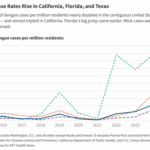Clinical trials are the cornerstone of medical advancements, yet they often fail to represent the diverse patient populations seen in everyday healthcare settings. This discrepancy can slow the adoption of new therapies in routine care, particularly in community settings. As the healthcare landscape evolves, leveraging real-world evidence (RWE) has become crucial to bridge this divide.
New therapies frequently enter the market with robust clinical trial data, yet their adoption in everyday medical practice can lag. This is largely because trial populations often do not reflect the patients seen in routine care, especially in community-based settings. Clinical trials typically involve patients from academic institutions with strict eligibility criteria, which may not account for the broader demographics and varied care practices found in real-world settings.
Filling the Gaps Left by Trial Populations
Clinical trials are designed to demonstrate safety and efficacy under controlled conditions. However, the stringent controls that ensure statistically sound results also limit the diversity of enrolled patients. Often, individuals with certain comorbidities, older adults, or those treated in community settings are excluded.
This exclusion creates a challenge once a therapy is approved: physicians outside large academic centers may not see their patient populations reflected in published trial results. This can lead to uncertainty about whether trial outcomes are applicable to their patients, especially when clinical presentations are more complex or diagnostic workflows differ.
The Role of Representative Real-World Evidence
To build confidence beyond the trial setting, pharmaceutical companies increasingly rely on follow-up studies using real-world data. Post-approval studies can demonstrate a therapy’s effectiveness in broader patient groups, particularly those not well represented in the original trials. These studies, often conducted in partnership with community and academic research sites, are published in peer-reviewed journals to support physician confidence and inform policy updates.
When executed effectively, real-world studies address clinical questions that trials were not designed to answer. They can reveal whether a therapy performs consistently across different demographic groups, in non-academic settings, or alongside varying standards of care. These insights support more confident prescribing and broader inclusion in guidelines or coverage policies.
Up to 80% of oncology patients in the US are treated outside academic centers. If datasets overlook these environments, they risk leaving behind the majority of real-world patient experiences.
Data Access Challenges
For teams focused on expanding therapy adoption, the challenge lies not in acquiring data but in accessing datasets that truly reflect real-world care. Many widely used platforms draw heavily from academic medical centers, where patient demographics, workflows, and diagnostic access differ significantly from community settings.
This imbalance restricts the ability to study how therapies perform across diverse populations and care environments. When datasets overrepresent one segment of the healthcare system, it becomes difficult to generate evidence that supports broader clinical decision-making or addresses variations in real-world adoption.
Emerging Technologies to the Rescue
Emerging technologies are beginning to address these limitations. Federated data models, artificial intelligence-driven data harmonization, and synthetic control arms allow researchers to generate robust, privacy-preserving insights across multiple care settings without centralizing sensitive patient data. These innovations enable the study of therapy performance in truly diverse populations, unlocking broader clinical utility.
“Bridging the divide between clinical trials and the real world is no longer a post-market task—it’s a prerequisite for scalable innovation.” – Noah Nasser, CEO, Datma
Closing the Gap Between Trials and Practice
Regulatory approval confirms a therapy’s safety and efficacy within a defined trial population. However, translating that success into real-world adoption is more complex. For therapies to reach broader patient populations, especially those underrepresented in trials, pharmaceutical teams must invest in generating evidence that mirrors real-world care.
These studies play a critical role in filling the gaps left by clinical trials, helping physicians understand how a therapy performs in settings and patient groups they encounter daily. As the oncology landscape continues to evolve, the ability to assess performance across diverse clinical environments is becoming a key factor in driving adoption.
Generating representative evidence is a strategic investment to ensure that innovations in care translate to real-world benefits. As precision therapies grow more targeted and complex, the need for population-level, representative evidence will only increase. Bridging the gap between clinical trials and real-world practice is essential for scalable innovation and improved patient outcomes.
About The Author
 Trump’s Domestic Policy Bill Faces Crucial Test in Divided House
Trump’s Domestic Policy Bill Faces Crucial Test in Divided House India Seeks to Cut Dependency on Chinese Raw Materials Amid Strategic Shift
India Seeks to Cut Dependency on Chinese Raw Materials Amid Strategic Shift Surge in Dengue Cases Signals New Normal as Mosquito Season Peaks
Surge in Dengue Cases Signals New Normal as Mosquito Season Peaks GOP’s Unprecedented Move to Cut Medicaid Through Reconciliation
GOP’s Unprecedented Move to Cut Medicaid Through Reconciliation Funding Cuts Undermine Trump’s Health Agenda Despite MAHA Report Promises
Funding Cuts Undermine Trump’s Health Agenda Despite MAHA Report Promises